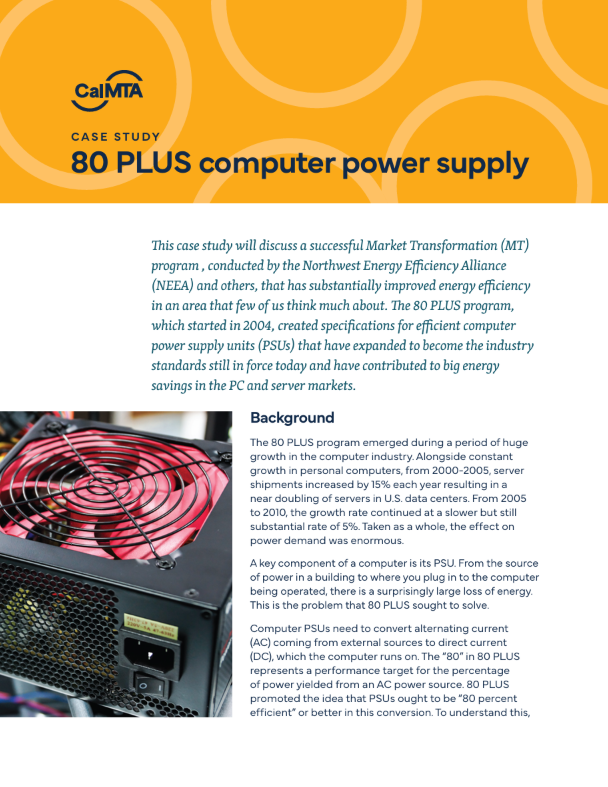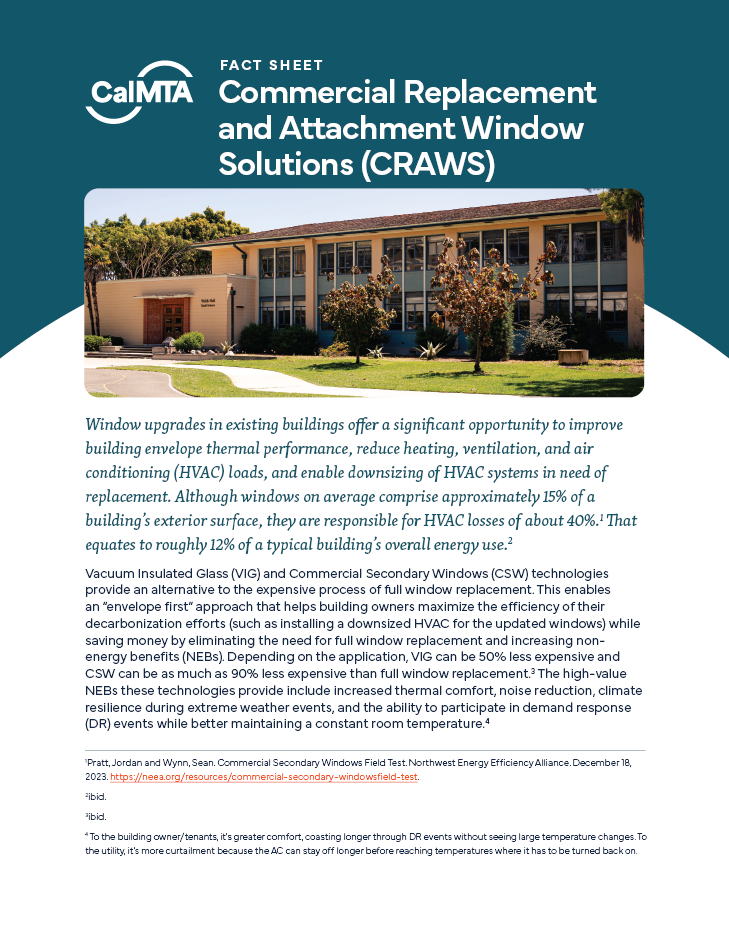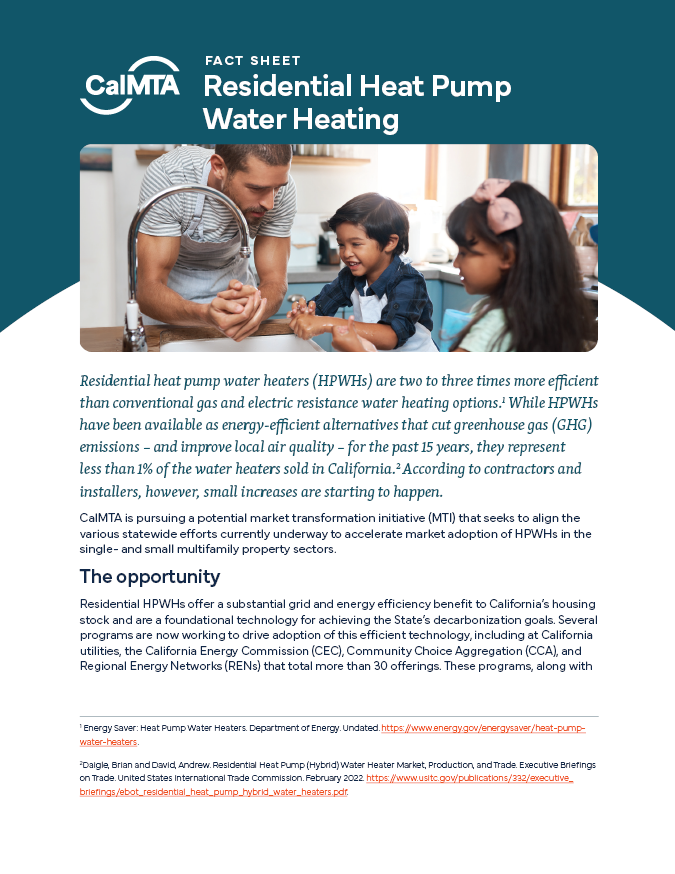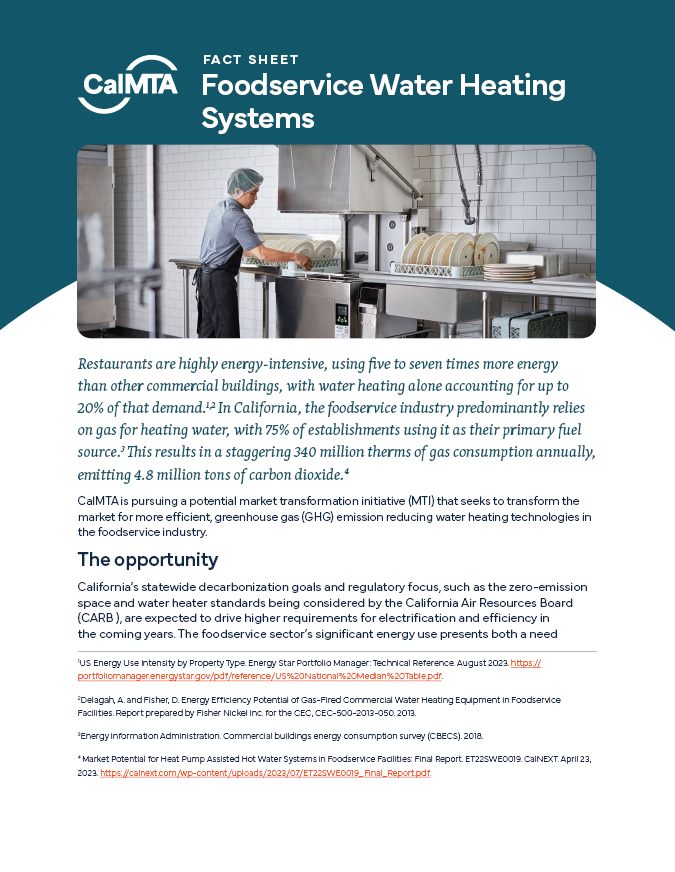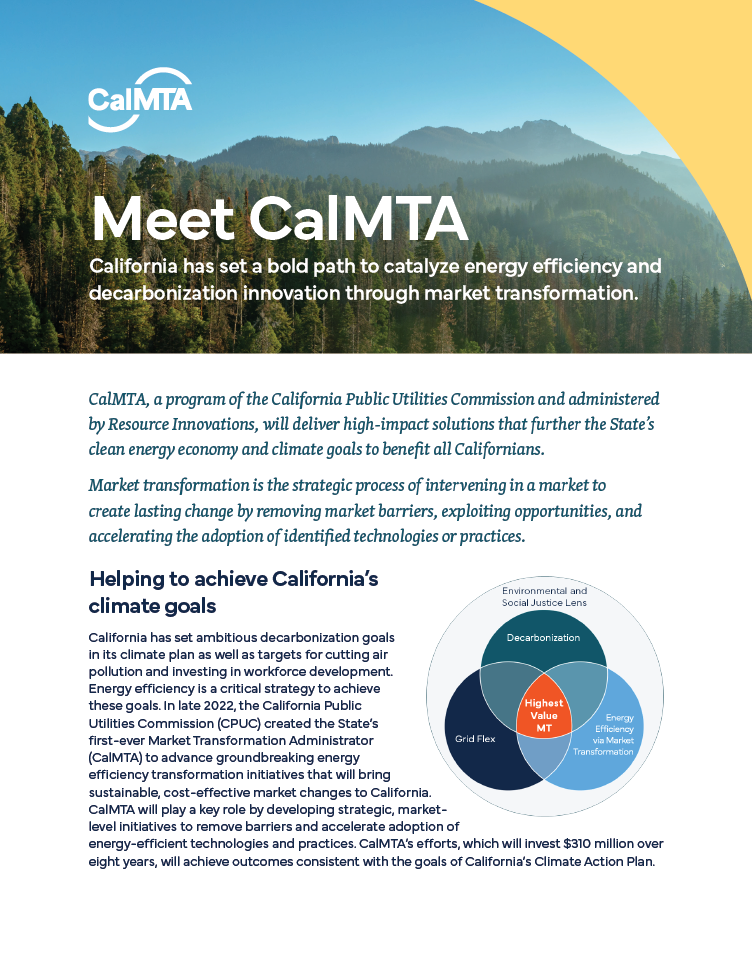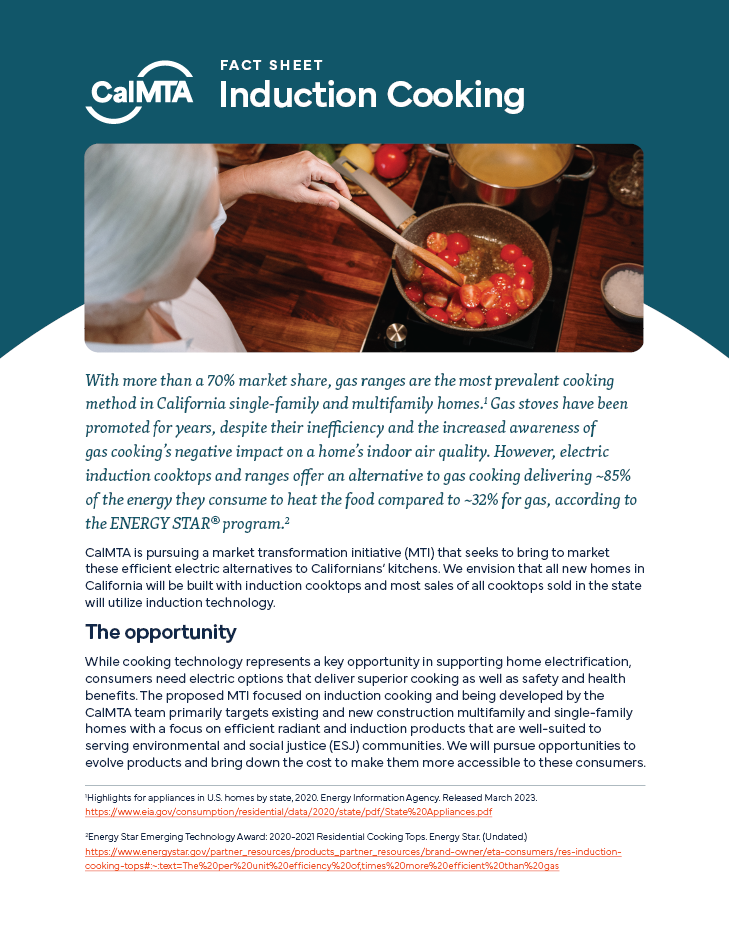This case study demonstrates a successful Market Transformation (MT) program that has substantially improved energy efficiency in an area that few of us think much about. The 80 PLUS program, which started in 2004, created specifications for efficient computer power supply units (PSUs) that have expanded to become the industry standards still in force today and have contributed to big energy savings in the PC and server markets.

